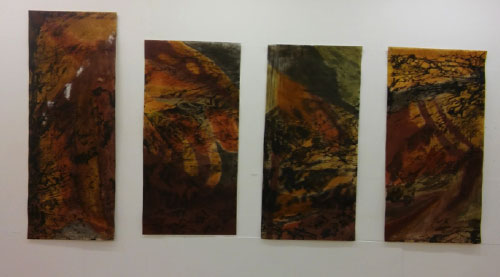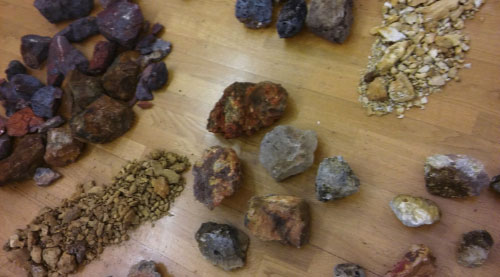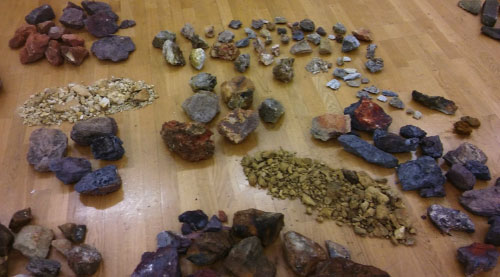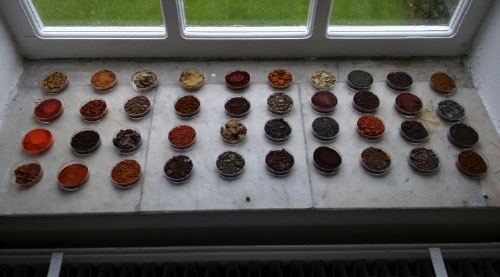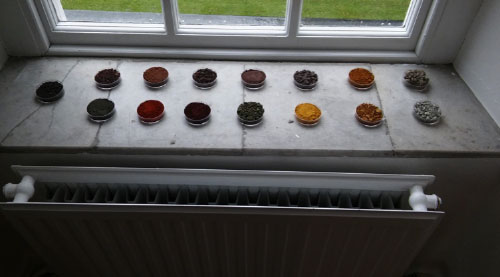Curious Travellers is a project run jointly by University of Wales Centre for Advanced Welsh and Celtic studies and University of Glasgow. The project explores travel writing from Romantic-era Wales and Scotland. One of the earliest and most influential of these travellers was the Flintshire based naturalist and antiquarian Thomas Pennant (1726 – 98). Thirteen artists were asked to read, walk and respond to sections of Thomas Pennant’s Tours. The artists selected which parts of the journal and landscape they wanted to delve into.
Alison responded to this section of the journal ‘Tours’:
‘The whole of this tract has, by the mineral operations, assumed a most savage appearance. Suffocating fumes of the burning heaps of copper arise in all parts, and extend their baneful influence for miles around. In the adjacent parts vegetation is nearly destroyed; even the mosses and the lichens of the rocks have perished.
The sides of this vast hollow are mostly perpendicular, and access to the bottom is only to be had by small steps cut in the ore; and the curious visitor must trust to them and a rope, till he reaches some ladders, which will conduct him the rest of the descent. On the edges of the chasms are wooden platforms, which project far; on them are windlasses, by which the workmen are lowered to transact their business on the face of the precipice. There suspended, they work in mid air, pick a small space for a footing, cut out the ore in vast masses, and tumble it to the bottom with great noise.’
Tour in Wales, II, 265 & 271
Parys Mountain is a mad landscape; it is lunar. The colours are extraordinary, made from iron, manganese, alums and a very complex mix of metals and oxides. The pigments displayed here are a very small sample of the huge range of colour which assaults every sense. The smell of sulphur hangs in the air and remains in the skin long after handling. The prints are made from these collected pigments, reflecting the landscape and its scarred, distressed and outraged life.
Pennant loved experimentation, and had his own smelter constructed on his estate at Downing. I too love to experiment. I am curious about what may happen, and in my creative practice I use fire, whether a kiln or a foundry. I work with different materials: rocks, clays, metals, especially iron, all with their own strengths and reaction to heat. In the kiln alchemy takes place. The materials are transformed. Unseen oxides and metals emerge from the depths of the rocks; the colours change. The rocks here are all from Parys Mountain. Some were subjected to very high heat; others are as I found them. They reflect the trauma of what has taken place over ages; from volcanic eruptions to mining. The trauma of those who had to work the mines also emerges from the hearts of the rocks.
